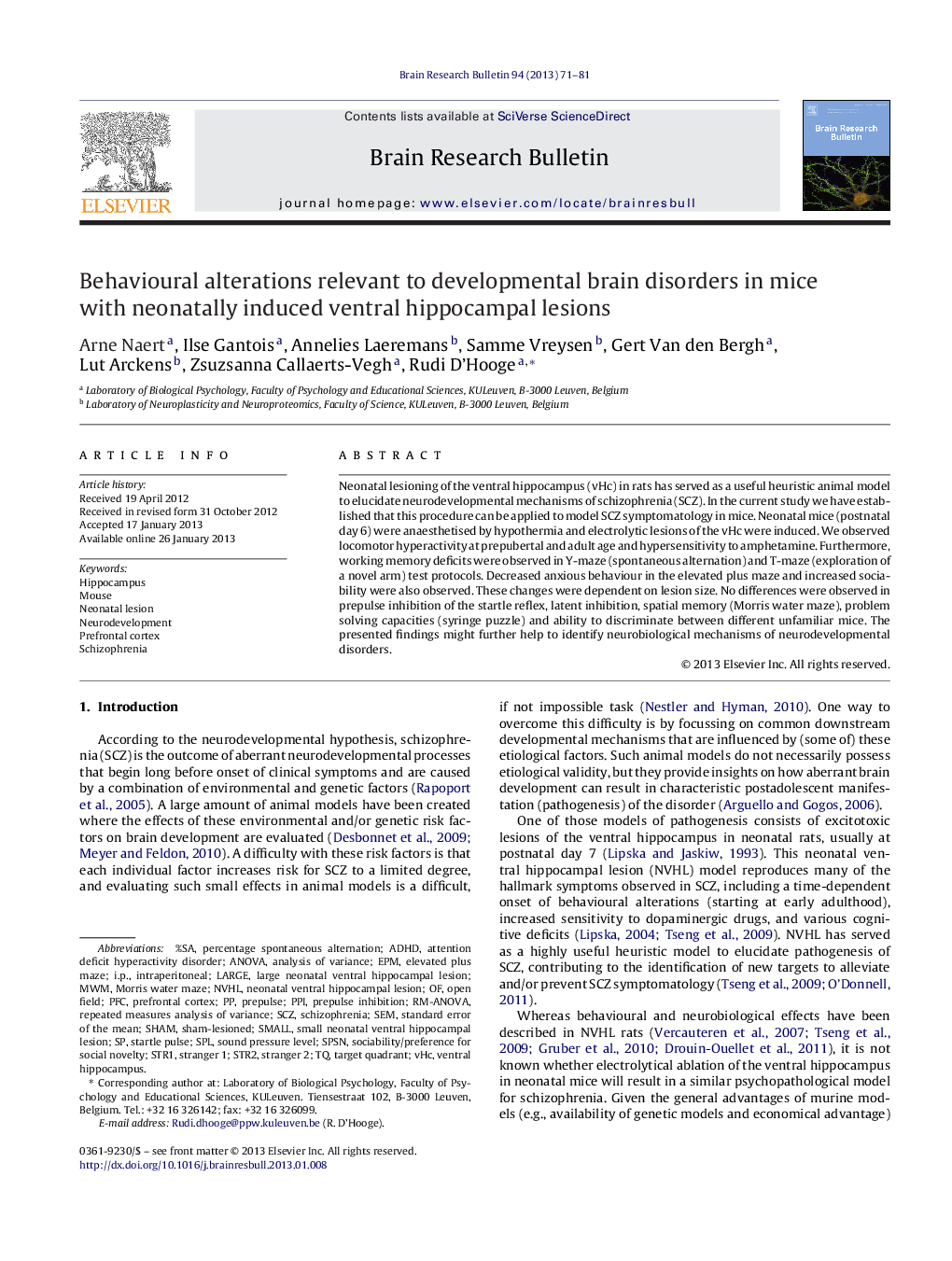| Article ID | Journal | Published Year | Pages | File Type |
|---|---|---|---|---|
| 4318905 | Brain Research Bulletin | 2013 | 11 Pages |
Neonatal lesioning of the ventral hippocampus (vHc) in rats has served as a useful heuristic animal model to elucidate neurodevelopmental mechanisms of schizophrenia (SCZ). In the current study we have established that this procedure can be applied to model SCZ symptomatology in mice. Neonatal mice (postnatal day 6) were anaesthetised by hypothermia and electrolytic lesions of the vHc were induced. We observed locomotor hyperactivity at prepubertal and adult age and hypersensitivity to amphetamine. Furthermore, working memory deficits were observed in Y-maze (spontaneous alternation) and T-maze (exploration of a novel arm) test protocols. Decreased anxious behaviour in the elevated plus maze and increased sociability were also observed. These changes were dependent on lesion size. No differences were observed in prepulse inhibition of the startle reflex, latent inhibition, spatial memory (Morris water maze), problem solving capacities (syringe puzzle) and ability to discriminate between different unfamiliar mice. The presented findings might further help to identify neurobiological mechanisms of neurodevelopmental disorders.
► We established a reliable protocol to induce ventral hippocampus lesions in neonatal mice. ► We validated our murine developmental model in schizophrenia like behavioural tests. ► Neonatal lesions affected amphetamine sensitivity, working memory and anxiety in adult mice.
